
This week, Sundberg-Ferar headed to the 2019 WardsAuto Interiors Conference to immerse in the flow of thought-leadership and professional community of the mobility industry.
Over the course of the day, we heard from dozens of incredible speakers on the pressing issues in vehicle interiors, we got to check out the top 10 vehicles awarded by WardsAuto for ourselves, and we had tons of great conversations with new friends in all aspects of the industry.
What were the takeaways from this annual deep-dive into automotive interiors?
Well, we certainly came away with many, but what follows are the highlights of the conference that we’ve put together for you from our human-centric industrial design perspective.

THE BALANCING ACT
In one of the last sessions of the conference, Rich Matsu of Autoliv articulated the tension that exists as we confront problems in the auto industry today, summarizing it with two famous quotes:
- “Unless you’re breaking stuff, you’re not moving fast enough” Zuckerberg
- “A problem well stated is half solved.” – Charles F. Kettering
While Rich’s presentation related these quotes to in-vehicle safety systems, they served to uncover a law at work across the category of mobility that sets the backdrop of our daily efforts – whatever aspect of mobility we’re in.
What is this tension? It is the balancing act of moving quickly to solve current problems in this industry with its ever-emerging technologies, but alsotaking the time to get as much of the info as possible to insure solving the rightproblem in the rightway. It’s the tension between rejecting the myth that we can wait until we know the way completely in order to start running down the path, but also taking the necessary precautions to shine a flashlight ahead and avoid unnecessarily scraped knees or worse – a fatal fall.

If cutting-edge mobility conferences like Wards have shown us anything, it’s that the automotive world is changing – and fast! Our users are more educated in their consumption of products. As they should, they will accept nothing less than a seamless user experience that takes into account our larger ecosystem. At the same time, the increasingly imperative technologies in the mobility experience like autonomy, connectivity, electrification and so on, are constant sources of friction and growing pains in the market. Add to that the ever-changing needs and desires of users as we in the mobility industry adapt to serve an aging population in tandem with the maturing millennial generation – each with disparate experiences that are seemingly irreconcilable informing their behavior and product interactions – and we begin to see the magnitude of what we must consider as we move forward.
In fact, the whole conference could be summarized as hundreds of mobility professionals, thought leaders, designers, engineers, marketers and more, all representing companies at various positions on this spectrum. Some of them are already taking bolder moves forward and embracing the inherent risks while others are more on the end of conservative progress. All of them, however, are clearly striving to articulate and learn from each others’ struggles, triumphs, failures and strategies in this mobility landscape, even as we all – industrial designers, engineers, design researchers, HMI and GUI experts and beyond – strive toward the simple, yet monumental feat of a truly human-centric, holistic mobility experience.
“THE QUALITY OF THE CONNECTIONS IS THE KEY TO QUALITY PER SE” – Eames
In the presentation from Alexander Van Laack, Consumer Intelligence Director for Faurecia’s “Cockpit of the Future”, he gave a wonderfully concise eagle’s eye view of 8 main topics at hand in any evaluation focused on the interior of the future. First, the 4 global megatrends of: connectivity, autonomy, ride sharing, and electrification. He explained, however, that while these represent the technical challenges we face, there are also 4 emerging megatrends describing experiential, human needs and desires of today: safety, time use, freedom, and flexibility. It is these that will drive the 4 technical megatrends and with which they must always blend in order to create successful interior experiences for our users.
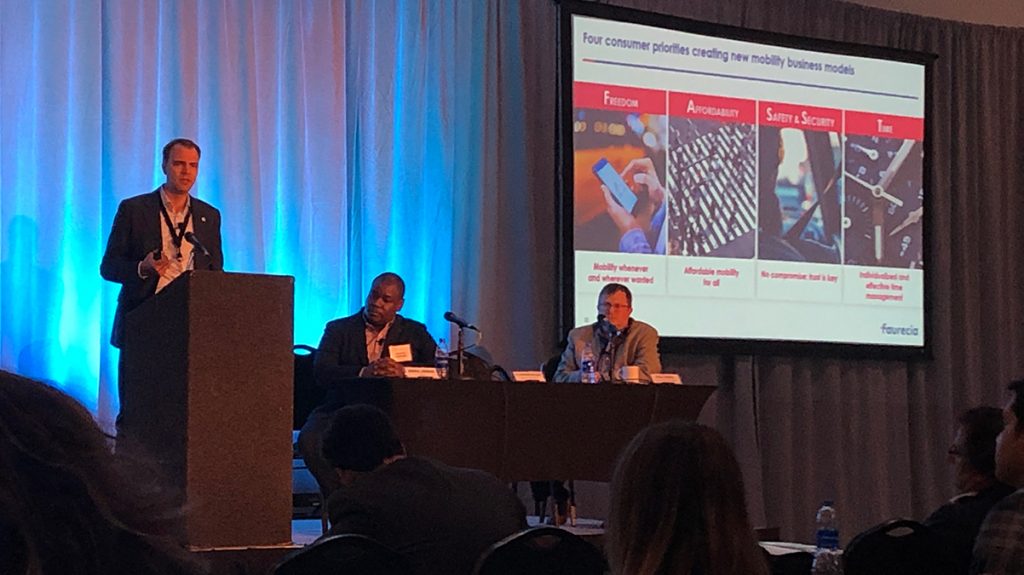
We at Sundberg-Ferar Product Innovation Studio have seen over our 85 years’ experience in cross-category, human-centric design that in some cases, the mobility industry falters because it has embraced these first 4 challenges that Dr. Alexander outlined, yet has failed to deliver them in a way that correctly responds to these emergent human needs and desires. In other cases, the industry has failed in even leveraging the technologies that have already been successfully introduced to the consumer’s vernacular in analogous categories. Users rightfully expect a seamless experience like what they experience in their everyday products and services outside mobility. Unfortunately, the mobility industry continues to struggle in effectively translating the ideal experience across categories and reduce the friction between these connecting experiences
Right now, at each connection point where new technology trends collide with these emotional, aspirational needs and wants of users, frictions and new challenges multiply. For example, where the tech trend of connectivity and the human need of safety interact, individual challenges of data security, driver distraction, navigation models, and more spring up. Where the human issue of time use in commute and the trend of ride share interact, there is the issue of delivering a vehicle interior that allows personal freedom to engage in diverse activities while not impeding the experience for those sharing the space, and it continues. Some of these issues are already informed by precedents set by bus, air and train travel, but not all the paradigms are helpful, nor should they be part of our thinking, and could even hinder us from transcending those sets of issues with newer solutions to the ride sharing as it is evolving today.
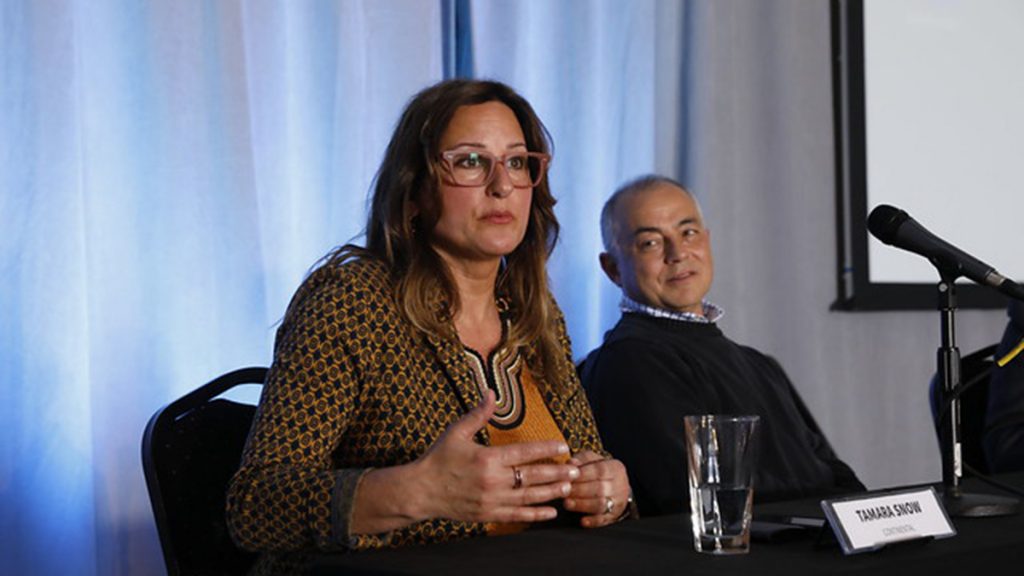
Continental’s Tamara Snow, and Autoliv’s Rich Matsu. (Photograph by WardsAuto.)
The speakers throughout the day’s presentations all addressed one or many of these areas of friction. Ernie Wilson of Auria took a closer look at how functional needs in automotive flooring, like providing noise control, cleanliness, and warmth, relate to the human needs of ease of communication between passengers, physical and mental comfort, and cleanability in the personal mobility experience. Graeme Stewart of Tachi-S North America outlined the ways that virtual reality is changing the way engineers are designing automotive seating. He also noted the importance of 3D printing technologies that link directly to leather-cutting machines in order to create more versatility and flexibility in the prototyping process. Magna’s Dino Nardicchio shared Magna’s view on how ride share will change the future of interior seating along with their exciting research into “personal sound zones” that will allow passengers to listen to their own music or videos without disturbing others in the vehicle. Tamara Snow of Continental emphasized that the key to excellent interiors is having an excellent internal team of human factors specialists to bravely forge a way in this fluid industry, but it’s also partnering with other key players in the industry. As she said, “we’re not the ultimate experts”, and in an age where the way forward is more ambiguous than ever before, we must collaborate in order to move forward.
THE ANSWER WILL ALWAYS BE IN HUMAN-CENTRIC DESIGN
Though the myriad issues that were crystalized throughout the conference are complex and often daunting, the answer that will show us a way forward was found in two common threads, irrepressibly wound throughout the comments of the day. The first was the necessity of allowing all design to be driven by the needs of people, and putting the understanding of those needs as the first priority in every case. The second theme, which was hinted at by virtually every speaker, is that we can no longer work on these issues from behind curtains of secrecy and isolation from each other. We must work together if we are to move forward and deliver human-centric mobility solutions today.
The necessity of designing for people at all costs was proclaimed literally from the loud speaker by Ford’s Manager of Global Advanced Interior Design, Dennis Sartorello, in his keynote speech. He rightly recognized the lie that, whether imposed by overseers lacking an industrial design background or by a one-dimensional view of industrial design proliferated by analogous industries, has insidiously tempered design educations, and corporate decision-making to the extent of drowning out the voice of real human needs. Seasoned industrial designers in the mobility world however all echo what Dennis implored of the audience: Since when was user experience reduced to a static 2D image? The widely used measuring stick of excellence in automotive design, he stated, is stillcentered around visually enticing “sexy” drawings and concepts.
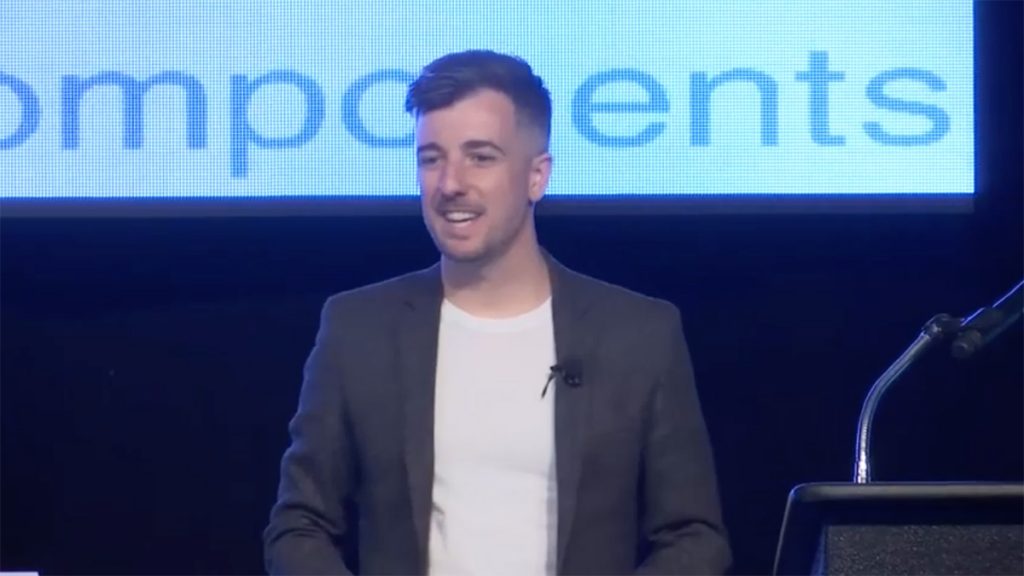
Dennis articulated a principle that we have long lived by at Sundberg-Ferar: The customer is given value not by pretty sketches and eye-catching forms. It is how we ourselves work, bringing in the user through a human-centric process, that brings value to our designs. This is what brings instrumental value to our products. It’s what makes them useful, usable, ergonomic, and beautiful in a sea-of-sameness market. As designers we must make human-centric design the very foundation of every product. This is the lifeblood of our philosophy at Sundberg-Ferar.
When we openly bring the customer to the table in our process with “#nofilter”, as Dennis said, we show them the value and authenticity of a product designed for users and incorporating their own thoughts, pressing needs, and desires, whether spoken or unspoken. It goes without saying at Sundberg-Ferar, that once we use our customer and end-user as inspiration without being driven just by an enticing sketch, we begin to approach truly human-centric design.
At our design studio, we start the human-centric design process with robust design research that engages directly with customers and end users to inform the design of our clients’ products, and not only that but it tells us where new products are actually needed and how to create product to solve the right problems. Our multi-disciplinary team works together to squeeze those insights from the user into the product from concept to production level intent prototypes.
In the context of mobility challenges, this human-centric process that we undertake daily at Sundberg-Ferar can endow an otherwise complex, and sterile technology with intangible and emotional attributes that make it seem simple and pleasurable to use. It can break down the different needs of users by target segment and demographics to reveal design solutions that will address the growing generational experience gap. Relying on those who are trained in human-centric design to understand and distill the real needs and desires of users into today’s mobility experience is the way forward in a period of unprecedented complexities. Industrial Design understands that fundamental human needs have remained consistent over time and we must rely on these to show us the way forward as technologies shift.
In his keynote, Dennis also gave examples of some of the key activities in design research that are now being introduced at Ford, and that SF has also been practicing for decades in each new product. These are foundational human-centric design activities like trying the product or prototype for ourselves, getting our hands dirty by mocking up 3D hypotheses of a product, doing onsite design research in whatever environment the product will actually be used, and doing whatever it takes to get us out of the 2D world into the experiential 3D world where we can understand how people are using and misusing a product or prototype. Not only that, but learning to talk like the customer and taking note of the words they use instead of imposing industry terms on them can also give valuable insight that guide a more intuitive user experience. In all of this, it’s about observing and understanding human behavior in context and cross-referencing it their behavior with analogous products and as they transition between products across categories to spot those areas of friction.
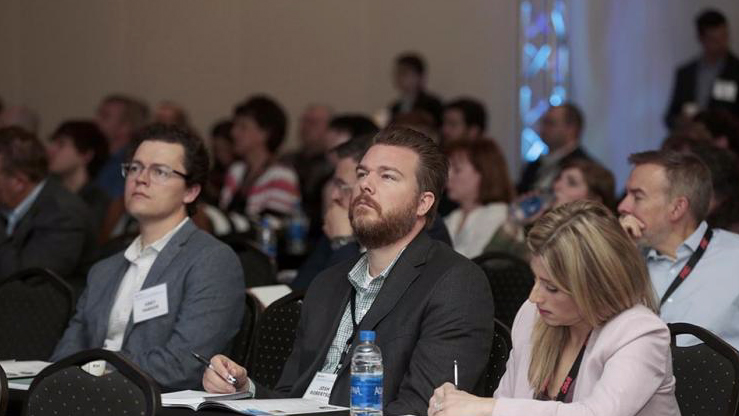
Sundberg-Ferar’s CEO and Director of Engineering, Grey Parker (left), taking in one of the day’s presentations. (Photograph by Rebecca Cook)
Dennis rightly explained that the studio must be a playground of learning: “We need to be as creative with customers to get insights as we are with our art and our designs.” The design studio must be stage for the messy process that brings all the players to the table at once to create a unified product and externalize ideas for everyone to have input.
Finally, many industry experts given the stage over the course of the conference expressed the urgency of working together on these challenges. In a world where everything is connected – products, people, and technologies – there is no room for isolation. As George Nelson famously stated “no design can exist in isolation. It is always related to an entire constellation of influencing situations…”
Our everyday lives are already burdened and inundated with incompatible experiences and products, yet we are more educated, and have access to more information than ever before. The new generations will not waste time anymore on designs that merely assume their needs or impose an arbitrary action, value, or lifestyle. We accept nothing but a seamless experience.
As professionals in the automotive industry, we are past the time when we had the luxury to breast our cards as a means of keeping a competitive edge. Today, the winning design will come from the partnership that does the best job of taking into consideration the entire cross-category user experience, and pools their resources to create a product occupying a definitive place and reducing friction in that larger context. The winning design will go notto products that try to be all things to all people, but to those that start by being something to someone.
Despite the wicked problem we face of understanding the ideal user vehicle interior experience – let alone delivering it, despite the conundrum of accommodating an ever more polarized market base, despite being always painfully poised on the razor’s edge of trying to move ahead quickly while also making sure we have enough information to identify the rightproblems to solve, despite all of this, we continue to move forward together – as evidenced by the impressive automotive interiors that were awarded at the 2019 WardsAuto interiors conference.
THE WARDSAUTO TOP 10 INTERIORS
The 10 cars that were showcased and awarded all stood out because of their unequalled overall interior experience. Each one offered both the functional elements that make it work, but also the all-important emotional elements that create a human-centric experience of delight.
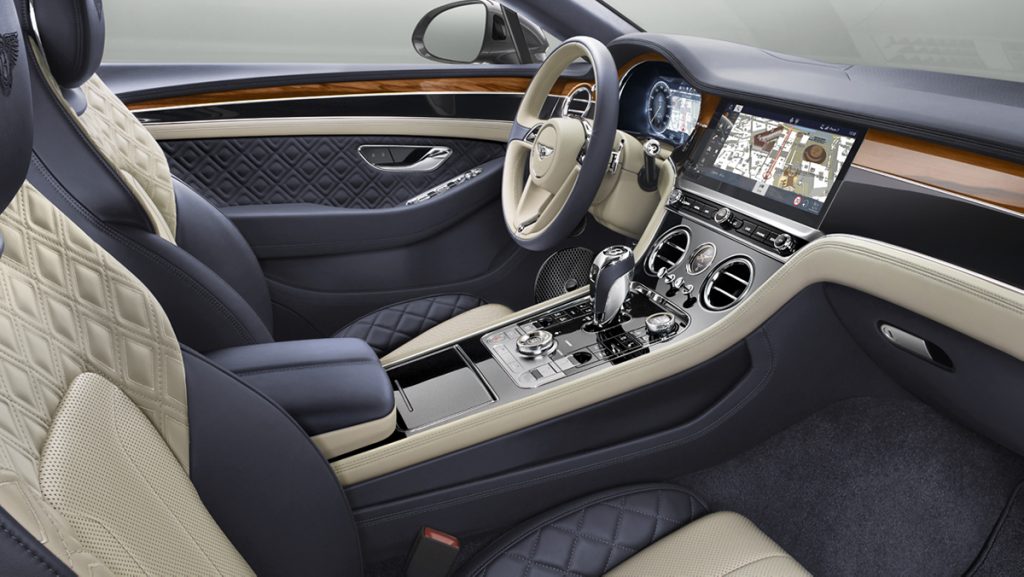
Bentley Continental GT Interior
From ergonomic pleasures like the “beefy pistol grip” gear selector found in the BMW 850i, to increasingly intuitive center console controls across the board and cockpits that perfectly envelop the driver like on the Bentley Continental GT the interiors honored by Wards were stunning. Finishes that were as functional as they were beautiful, like the plaid upholstery of the Volvo V60 and attention to details like in the Genesis G70 that delivered a rarely-seen back-seat experience that was just as luxurious as the front, or the beautifully designed speaker grills and door panels in the Hyundai Santa Fe set these vehicles apart from the everyday experience.
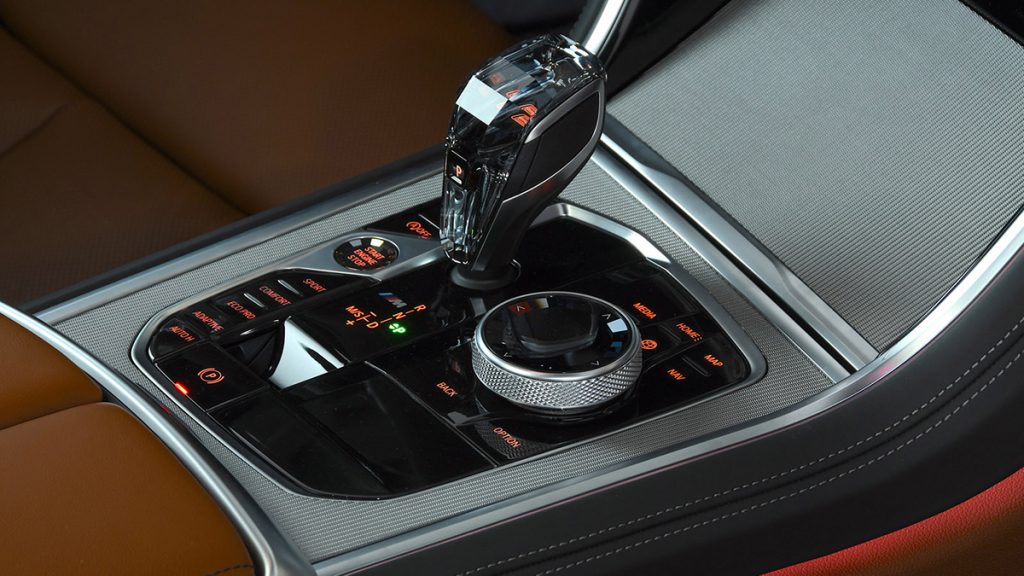
Gear selector from the BMW 850i
Many of these are examples of how – though the intrinsic and instrumental value has to be there – aesthetic beauty itself serves a purpose in giving the driver a sense of luxury, fun, and control. In more concrete cases where design brings instrumental value to the vehicle interior, the Jeep Gladiator incorporated the highly functional and rugged features for which the brand has been sought-after by generations of adventurers. Namely, the pickup convertible was equipped with extra storage bins in areas like under the back seats, and a blue-tooth speaker charging port, all lockable for rough and tumble off-roading.
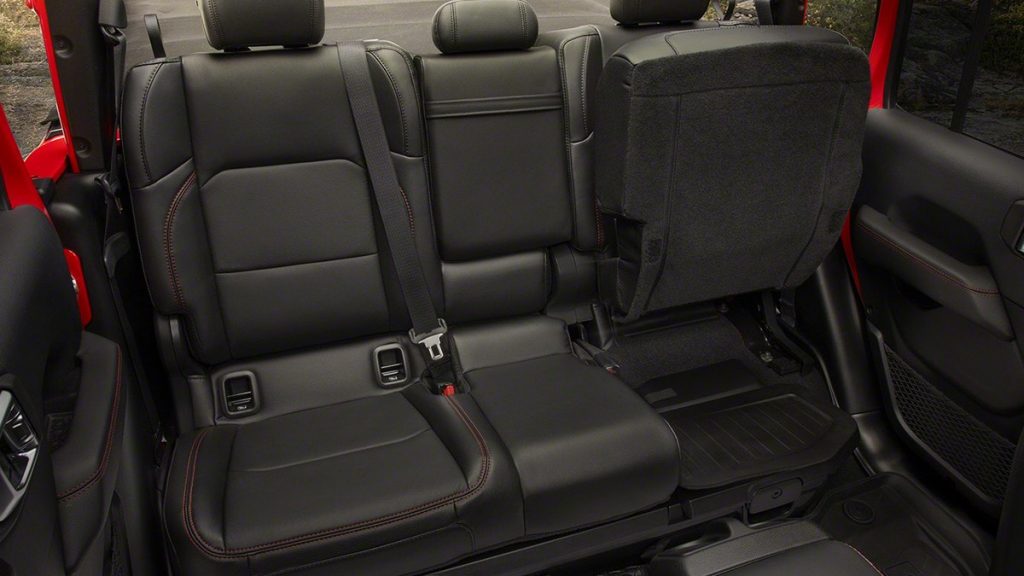
Jeep Gladiator’s rugged back seat
A huge part of successful interior design is, as we mentioned, taking inspiration from beyond our own category and forsaking a myopic view of possible solutions by paying attention to solutions in analogous industries. A great example of this was in the Lincoln Nautilus where orthopedic surgeons were consulted among other experts on the design of the SUV’s “Ultra Comfort power driver’s seat”.

The Mercedes-Benz A220 outdid themselves by being the first in the industry to apply AI to their interior experience through their latest infotainment system which includes AR for navigation. The Nissan Kicks interior, designed especially for singles and couples “looking for expressive styling, personal technology, and advanced safety features at an affordable price”, was an impressive example of excellence in meeting the needs of a clear and focused target segment. Meanwhile, the Toyota Rav4, proved to us that high volume vehicles can still be packed with the fun and luxury that has only been seen in low-volume until recently.
SO WE DO NOT LOSE HEART
At the end of the day, the Wards Auto Interiors conference showed us that in an ever-complicating world, we must still rely on one foundational thing to lead the way: humans. We can understand and deliver a truly usable interior vehicle experience by relying on our end-users and on those who have given their life’s work to training for and executing this noble task of human-centric design. We have, we will, and we are already seeing the victory of seamless experiences, and of products and services that are bettering humanity. With over 85 years in pioneering human-centric design in the US and across the globe, Sundberg-Ferar Product Innovation Studio has created thousands of human-centric products. We’ve seen that it’s these products that triumph and create lasting change; products that set themselves apart as uniquely useful, usable, and beautiful; products that are “different by design”.